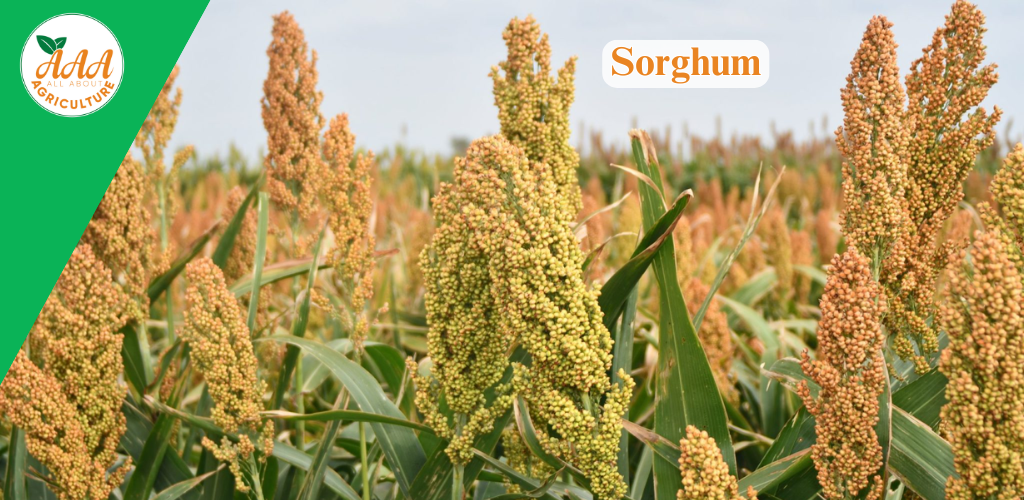Sorghum Production Technology
Sorghum Production Technology

Sorghum (Jowar) is a climate-resilient cereal crop used for food, fodder, and biofuel production. With modern production technology, farmers can achieve higher yields, better grain quality, and improved profitability while ensuring sustainable farming practices.
Key Steps in Sorghum Production Technology
Climate & Soil Requirements
➡ Ideal temperature: 25-32°C, drought-tolerant with minimal water needs.
➡ Grows well in well-drained sandy loam to clayey soils.
➡ Optimal pH: 5.5 – 7.5 for best nutrient absorption.
High-Yielding & Hybrid Varieties
➡ Popular varieties: CSH 16, CSH 25, CSV 15, SPV 2217.
➡ Choose varieties based on grain, fodder, or biofuel use.
Sowing & Seed Rate
Best sowing time:
- Kharif Season: June-July (Rainfed)
- Rabi Season: September-October (Irrigated)
- Summer: January-February (Limited irrigation)
Seed rate: 8-10 kg per hectare (hybrids), 12-15 kg per hectare (local varieties). Spacing: 45-60 cm (row-to-row) & 10-15 cm (plant-to-plant) for better aeration.
Sowing methods:
Drilling Method (Uniform growth & spacing)
Broadcasting (Traditional but less efficient)
Zero Tillage (Moisture conservation)
Nutrient & Fertilizer Management
➡ NPK Recommendation (per hectare):
- Nitrogen (N): 80-100 kg (split application)
- Phosphorus (P₂O₅): 40-60 kg
- Potassium (K₂O): 30-40 kg
➡ Apply organic manure & biofertilizers for long-term soil fertility.
Irrigation & Water Management
➡ Sorghum requires 3-4 irrigations at critical growth stages:
- Germination Stage
- Tiller Formation Stage
- Flowering Stage
- Grain Filling Stage
➡ Drip irrigation & moisture conservation techniques help in dry regions.
Weed, Pest & Disease Control
➡ Common weeds: Parthenium, Cynodon, Cyperus – managed using herbicides (Atrazine, 2,4-D).
➡ Major pests: Shoot Fly, Stem Borer, Armyworms – controlled using IPM techniques & resistant varieties.
➡ Diseases: Anthracnose, Grain Mold, Ergot – managed with crop rotation & fungicides.
Harvesting & Post-Harvest Management
➡ Harvest when grains are hard & moisture content is below 15%.
➡ Use mechanized harvesting for efficiency.
➡ Proper drying & storage ensure quality grains and prevent fungal growth.